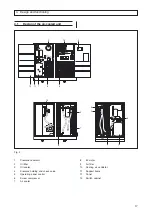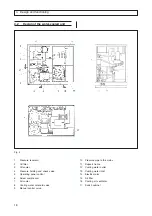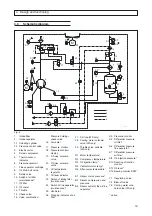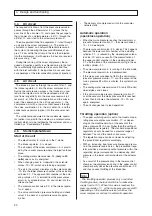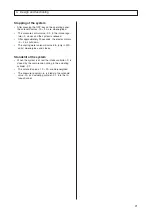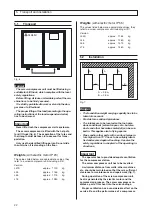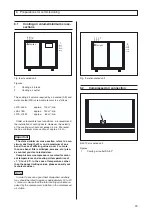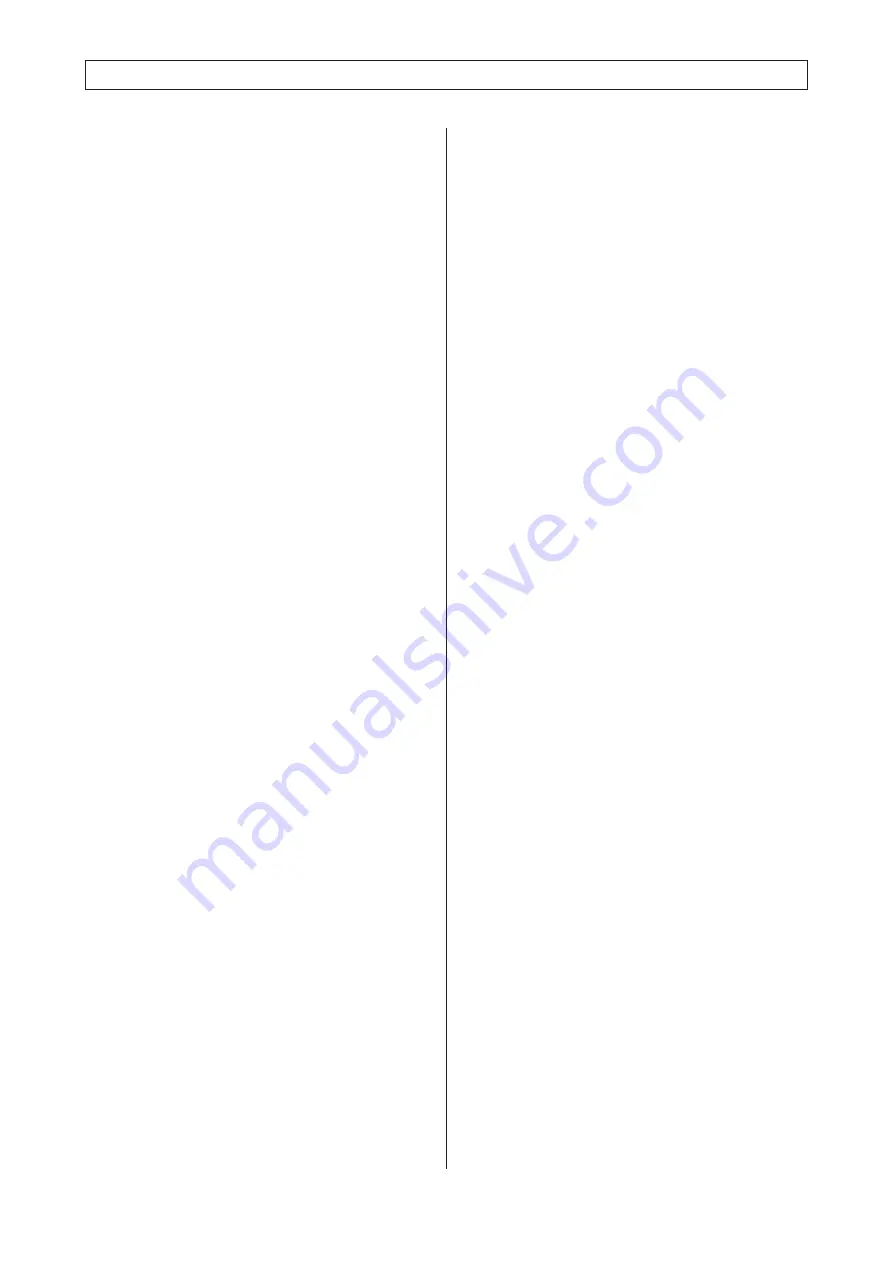
8
Cold dryer
Wherever possible, the cold dryer should be installed
in a place where the ambient air is as clean as possible
and where the temperatures never rise above or fall
below the respective limit values as indicated in the
operating instructions. If required, the cooling air is to
be taken from a cleaner, cooler or warmer area via an
intake channel; depending on the size of the- machine,
an additional ventilator could turn out to be necessary.
If the room temperature can fall below zero, the con-
densation drain system must be protected from freez-
ing, e.g. by means of a steam heater.
If it is possible that the intake temperature of the air
will exceed, from time to time, the admissible maximum
specified in the operating instructions, a pre-cooler with
condensate drain is to be installed before the dryer.
Tests or repair work on the coolant circuit may only be
carried out in a well vented room. Never breath in cool-
ant vapour; if necessary, wear a breathing mask. Al-
ways wear protective goggles and gloves. If skin comes
into contact with coolants, rinse well with water. Never
take off or tear up clothes but rinse them well with water
until the coolant is washed off; then see a doctor.
3. Safety regulations
Normal operation
Take the necessary precautions to ensure that the ma-
chine is used only when in a safe and reliable state !
Operate the machine only when all protective equip-
ment, emergency shut-off equipment, sound-proofing
elements and extraction devices are in place and fully
functional !
Check regularly that
• all means of protection are correctly fitted and fixed,
• all hoses and/or pipes within the system are in good
condition, firmly fixed and do not chafe,
• there are no leakages (fuel, oil or coolant),
• all fittings are firmly tightened,
Condensate drain
The drain hose for condensate discharge is to be con-
nected to the drains or to a collecting reservoir, if local
regulations prohibit direct discharge to the drains. In
connection with this, it must be taken into account that
the condensate from compressors with oil-lubricated
pressure chambers can contain oil.
corresponding pressure safeguarding feature (safety
valve or similar) must be provided taking into account
the weakest pressurized component.
The min. and max. temperatures of +1 °C and +40 °C
are also valid for the intake air.
Pipes and/or other parts with a surface temperature
higher than 70 °C have to be suitably identified and
shielded against touching.
Electrical connections must meet the local regula-
tions. Power units must be connected to earth and pro-
tected from short-circuits by means of fuses.
• all wires are connected correctly and are in good
condition,
• all safety valves and other pressure relief mecha-
nisms are in good order and not blocked by e.g. dirt
or paint,
• the safety mechanisms are fully functional.
If compressed air hoses are used, they must be of the
proper size and suitable for the relevant operating
pressure. Do not use chafed, damaged or poor-quality
hoses.
Only use hose couplings and fittings of the right type
and the correct size.
Before blowing through a hose or an air pipe ensure
that the open end is positively held. A free end whips
and can cause injuries.
Before decoupling a hose ensure that it is pressure-
less.
Refrain from any working method which is doubtful in
terms of safety.
Never play around with compressed air !
Never aim compressed air at your skin or at other
persons !
Never use compressed air to clean your clothing.
When using compressed air to clean equipment take
the utmost care and always wear protective goggles.
The compressed air generated by these compressors
must never be used for breathing unless it has been
conditioned for those applications in line with the "safe-
ty requirements for respiratory air“.
Never use the machine in an environment, where in-
flammable or poisonous vapour can be sucked in.
Never operate the system at pressures and tempera-
tures below or above the values indicated in the techni-
cal data sheet.
The access panels, etc. have to be closed during ope-
ration.
Persons who stay in an environment or rooms, in
which the sound pressure is 85 dB(A) or higher, have
to wear ear protectors.
Check the machine/unit at least once per shift for visi-
ble damage and faults ! Report any changes (including
changes in the machine’s operating behaviour) to the
responsible department/person immediately. If neces-
sary, stop and lock the machine immediately !
In the case of malfunction, stop the machine/unit im-
mediately and lock it ! Have any defects rectified imme-
diately !
Observe the start-up and stopping procedures and
the control displays according to the operating instruc-
tions.
Before starting up or setting the machine in motion,
ensure that nobody is at risk.
Do not cut off or remove extraction or venting facilities
while the machine is running.

















